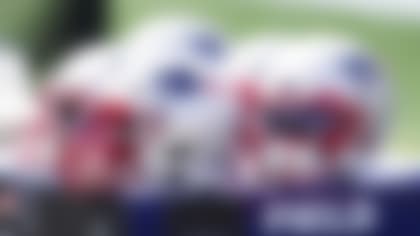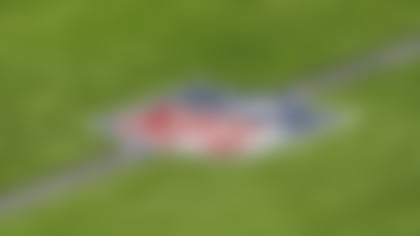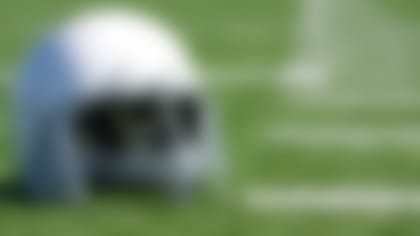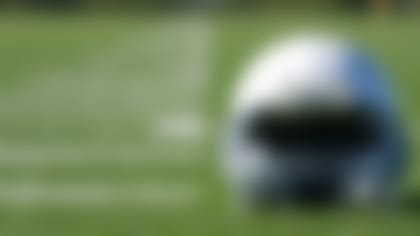A Shoe-Testing Machine Called "The Beast"
In a Charlottesville, VA biomechanics lab, there is a unique shoe-testing machine called the "Biocore Elite Athlete Shoe Turf Tester," or for short: "The Beast."
"It's a custom device that's able to build up the kinds of forces that elite athletes do," said Dr. Richard Kent inside the lab.
Dr. Kent is a professor of Mechanical and Aerospace Engineering, Biomedical Engineering and Emergency Medicine at the University of Virginia and works with the NFL on issues addressing athlete health and safety.
"The force that an NFL player puts on the ground through his shoe is much higher than say high school or even college players," Kent said. "'The Beast' helps us understand how much force it takes to release different cleat patterns from a turf surface."
Evaluating Shoe Safety
"A lot of people don't realize that the shoe is an important piece of protective equipment," Kent said.
"It's not just about style or performance," he said, "A shoe actually takes loads off of the foot so it can protect it."
Dr. Kent said lower limb injuries are responsible for approximately 60 percent of all NFL injuries.
"Every year, an NFL player will have 50 to 75 options they can consider for footwear to wear during a game," he said. "So our job, basically, is to evaluate the safety effectiveness of that footwear."
"We look at every cleat pattern that comes into the league every year," he said of this project, which is done in collaboration with the NFL Players Association.
According to Kent, there historically hasn't been this kind of evaluation of footwear at loads relevant to NFL players.
"I think we can really make some progress," he said.
"A lot of this is informed by the automobile safety world," Kent said. "We're applying a lot of those tools and techniques—basically we have crash test dummies now for feet."
A Three-Part Test
"We're testing three aspects of shoes: [their] traction behavior, [their] flexion behavior and how well [they] fit on the foot," Dr. Kent said.
Traction is tested with The Beast machine.
Dr. Kent said, "We can test how much force it takes and how much torque it takes to get the shoe to release from different kinds of surfaces."
He uses a custom device called "The FAST" to test a shoe's flexion—or the amount of force that a shoe generates as the toes bend backward like during running. Dr. Kent explained that if a shoe allows a toe to flex too far backward, it can result in turf toe, among other injuries.
"We want the shoe to really stiffen up and offload the foot so that you don't bend the toe so far," Dr. Kent said.
And Dr. Kent says a shoe's fit is crucially important for two reasons.
"If the shoe is too narrow, the side of the foot can slip off the plate of the shoe," he said. "If it gets over the side of the shoe, the bones on the side of the foot can break. And so, the shoe needs to be wide enough to accommodate an NFL player."
"The other aspect of size is we can go to all this trouble to optimize a shoe, and then if you wear the wrong size, it's not flexing in the right spot," he said.
"An NFL player should not go pick a box off a shelf and put that shoe on," Dr. Kent said. "There's much more to it."
Helping Players Make Informed Choices
Dr. Kent continuously shares his research findings with the NFL and the NFL Players Association, as well as the shoe companies so improvements can be made.
The NFL Musculoskeletal Committee has coordinated this extensive research on athletic shoe safety and performance and worked with Dr. Kent to develop the laboratory tests that evaluate which cleats best permit release from synthetic turf during potentially injurious loading.
The results of those tests are shared with NFL players, club equipment managers, and club medical, training, and coaching staffs to help inform equipment choices. A poster summarizing the results hangs in all 32 NFL club locker rooms.
The NFL also uses new technology to help players choose a shoe that is the appropriate size and shape. The HP FitStation technology is now installed in all 32 NFL locker rooms to scan a player's feet and identify the shoe models and sizes that best match him.
The goal: to equip players and equipment managers with the best information to help them make the most informed choices.









